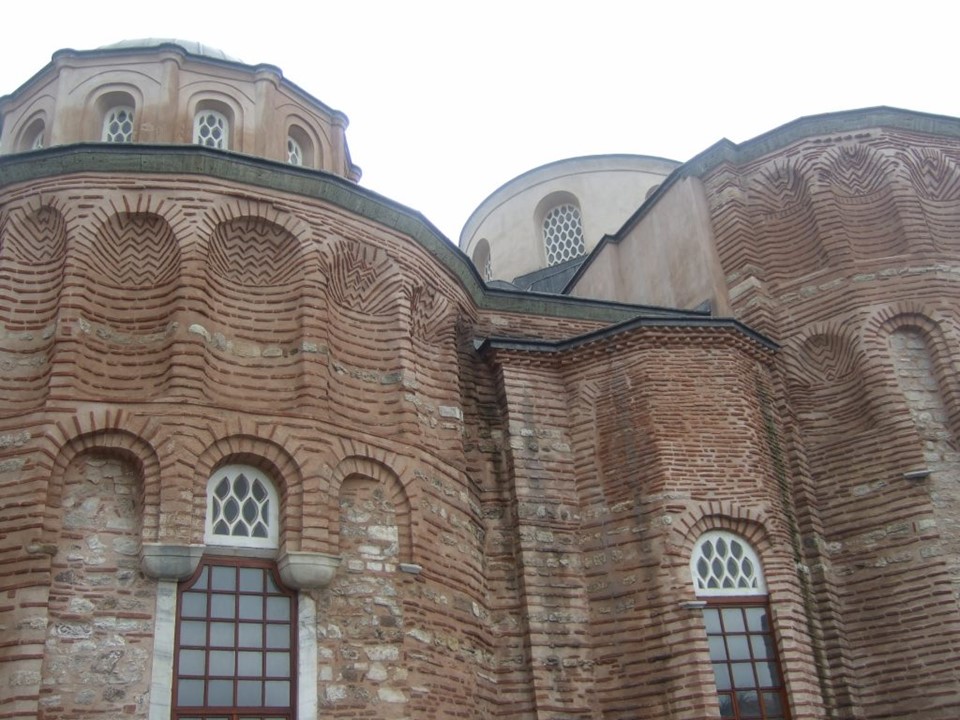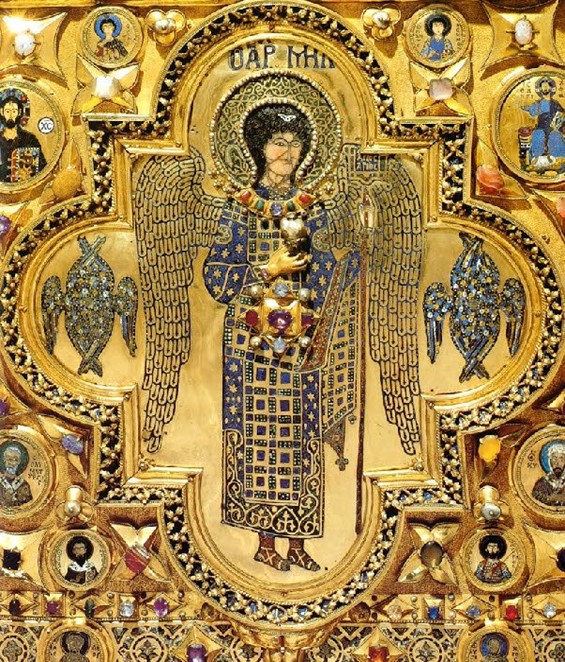
“Pala d’Oro (Italian, “Golden Pall” or “Golden Cloth”) is the high altar retable of the Basilica di San Marco in Venice. It is universally recognized as one of the most refined and accomplished works of Byzantine enamel, with both front and rear sides decorated.” Have you ever wondered what the connection might be between The Monastery of Pantokrator in Constantinople and the Pala d’Oro in Venice? https://www.projectexpedition.com/tour-activity/venice/vip-alone-in-st-marks-basilica-after-hours/36173/
The Monastery of Pantokrator, I wrote a few days earlier, consists of three churches: the South Church, the North Church, and the Middle Church or the “Heroon.” The South Church dedicated to Christ the Pantocrator is the oldest and the largest of the three… https://www.teachercurator.com/art/the-monastery-of-pantokrator-in-constantinople/
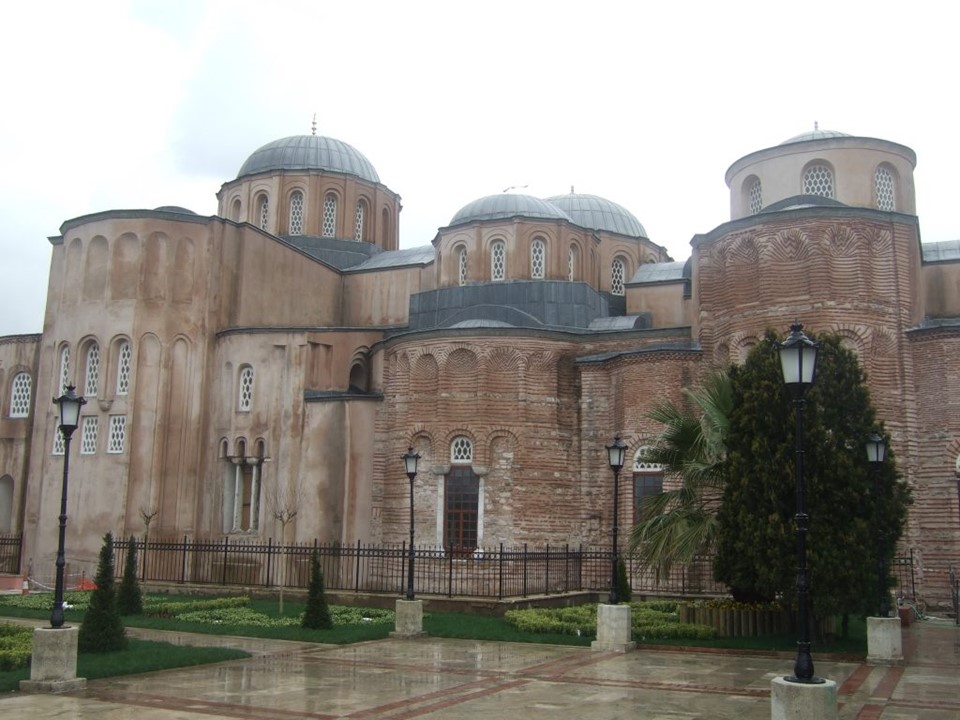
Imperial Church of the Komnenian Dynasty
Şeyh Süleyman Mescidi of Istanbul
The amazing Monastic Complex of Pantokrator, however, built by Emperor John II Komnenos, served a dual purpose… to honour the wishes of Empress Piroska-Eirene, tending to the needs of the “poor, sick, and suffering souls…” and be used as a mausoleum for the Komnenos Imperial family.
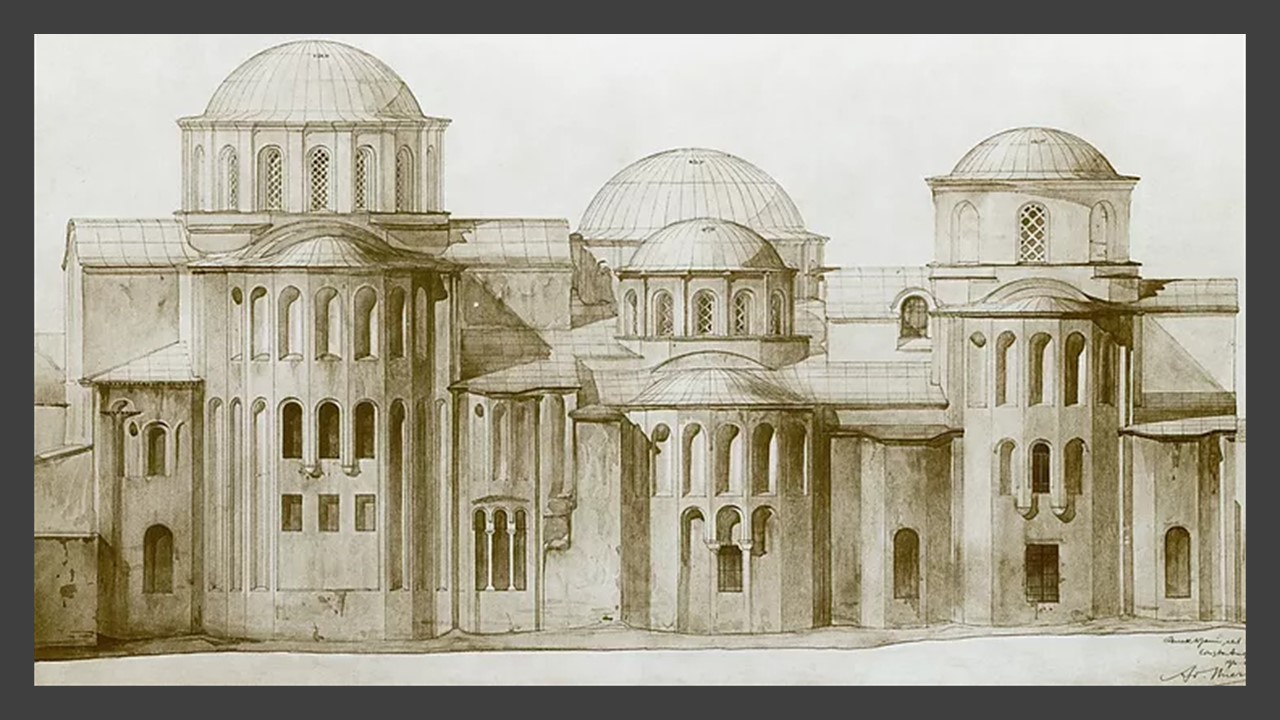
As you look at the elegant domes crowning all three Pantokrator Churches, your eyes slowly tumble down to embrace the graceful arches… allow your imagination free to envision the splendour that once graced their interiors, and ponder over the lives of all Byzantine Royals entombed under their stylish vaults.
The North Church, dedicated to Mary Eleousa was built after the death of Empress Piroska-Eirene, between 1124-1136, by Emperor John II Komnenos. The Church, built within the Monastic complex of Pantocrator, was dedicated to services offered by lay clergy but open to a wider congregation and attended by laymen. Smaller in size compared to the South Church, it follows a similar architectural style to the South Church and according to scholars, it was equally resplendent in its interior decoration. https://www.thebyzantinelegacy.com/pantokrator-monastery
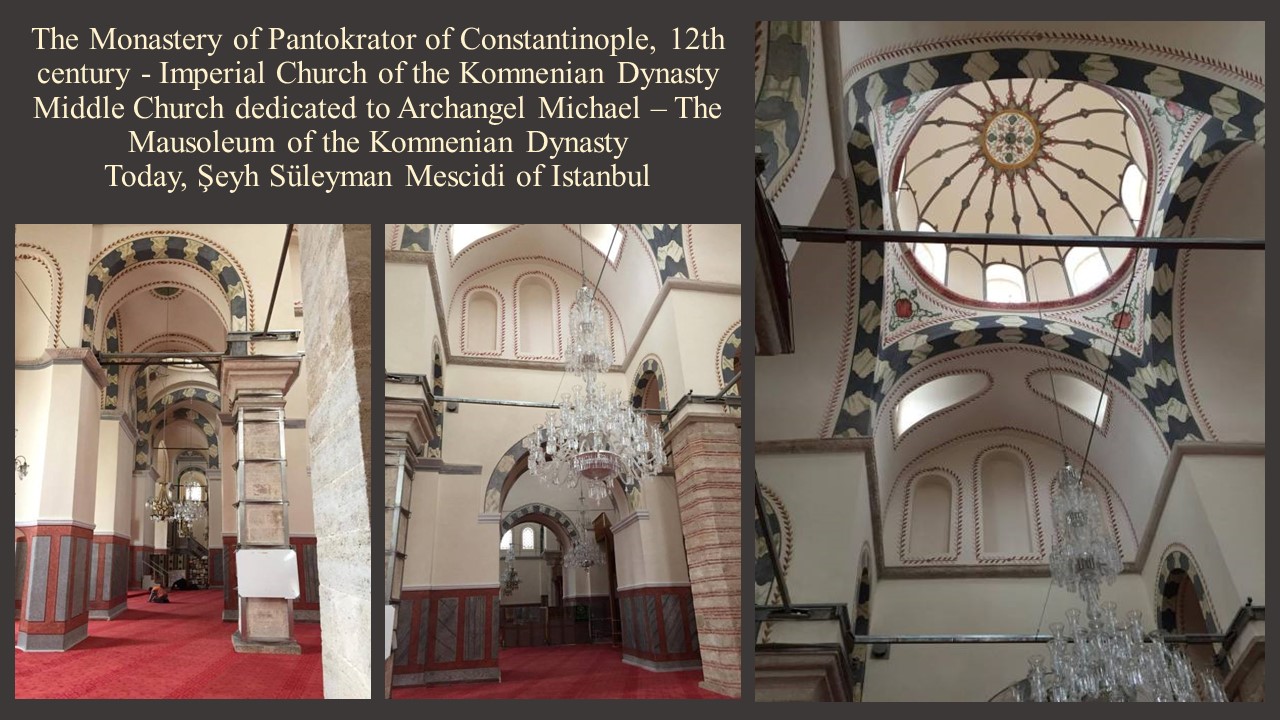
The smaller Middle Church, the last to be built, bridged and opened to the two original, free-standing, side Churches. Dedicated to Archangel Michael, affectionately called the Heroon, the Middle Church was the smallest of the three Pantokrator Churches and served as an Imperial Mausoleum. The architectural style and use of the Heroon, capped by two elliptical domes, was probably inspired by the roughly contemporary, Crusader Martyrium of the Holy Sepulchre in Jerusalem as the arrangement of the Imperial Burials in its interior further testifies. “While several Arcosolia are still evident in the western bay, the identities of their occupants remain unresolved. The only exception is that of Emperor Manuel I (1118-1180), whose black marble sarcophagus was located in the passageway from the South Church to the (middle) Chapel. It is likely that its two domes had two separate functions, the one in the east serving as the liturgical area, and the western one, where the tombs were located, functioning as a funerary space.” https://www.thebyzantinelegacy.com/pantokrator-monastery and http://constantinople.ehw.gr/Forms/fLemmaBodyExtended.aspx?lemmaID=11770
The Emperors and Empresses buried in the Heroon spared no funds in embellishing the Pantokrator Churches with amazing examples of monumental Art as well as items of luxurious Minor Arts. Visitors to the Monastery of our Lord and Saviour Jesus Christ the Pantokrator describe it as impressive in importance, resplendent in its decoration and dazzling in luxury! Unfortunately, “…under Latin rule of the city (1204-1261), the region in which the monastery stood belonged to the Venetians, who transported many of the holy utensils, relics and icons of the monastery to Venice.” It is most probable “that some of the panels of the Pala D’Oro in San Marco originally came from the Pantokrator Monastery. While it was originally ordered from Constantinople by the doge Ordelaffo Falier in 1102, it was reworked following the Fourth Crusade’s sacked Constantinople in 1204.” http://constantinople.ehw.gr/Forms/fLemmaBodyExtended.aspx?lemmaID=11770
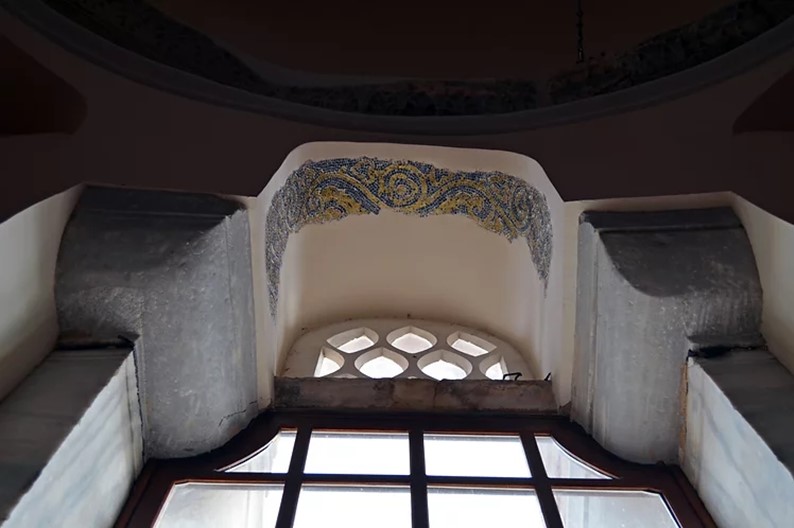
The Treasury of San Marco, Venice, Basilica di San Marco, The Metropolitan Museum of Art (1984) is informative and Free to Download ONLINE companion Catalogue of the synonymous Exhibition that took place in New York in 1985. Sergio Bettini’s article Venice, the Pala D’Oro, and Constantinople is “illuminating” to say the least, on how the Palla D’Oro is connected to the Monastery of Pantokrator. (Please read pp. 33-64) https://www.metmuseum.org/art/metpublications/the_treasury_of_san_marco_venice
After Hagia Sofia, present-day Şeyh Süleyman Mescidi or popularly called Zeyrek Camii, is the second-largest religious structure from the Byzantine Empire to survive in Istanbul.
For a Student Activity, please… Check HERE!
